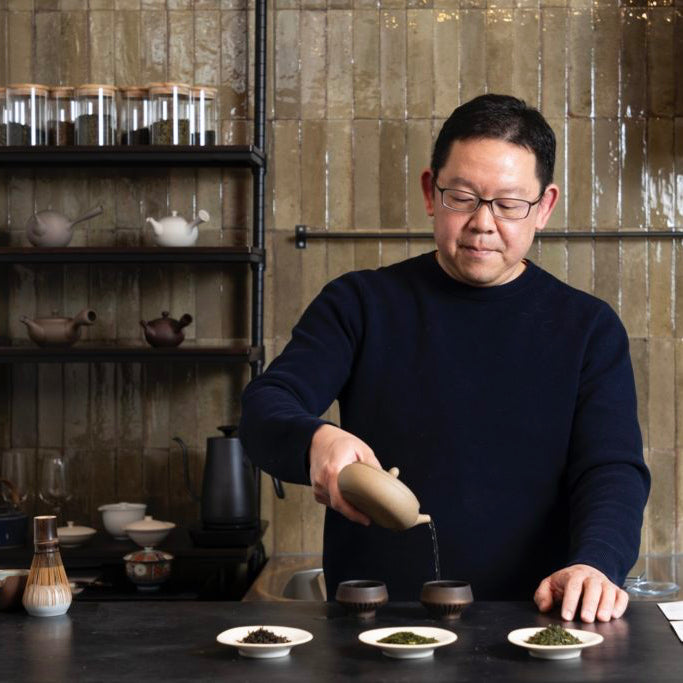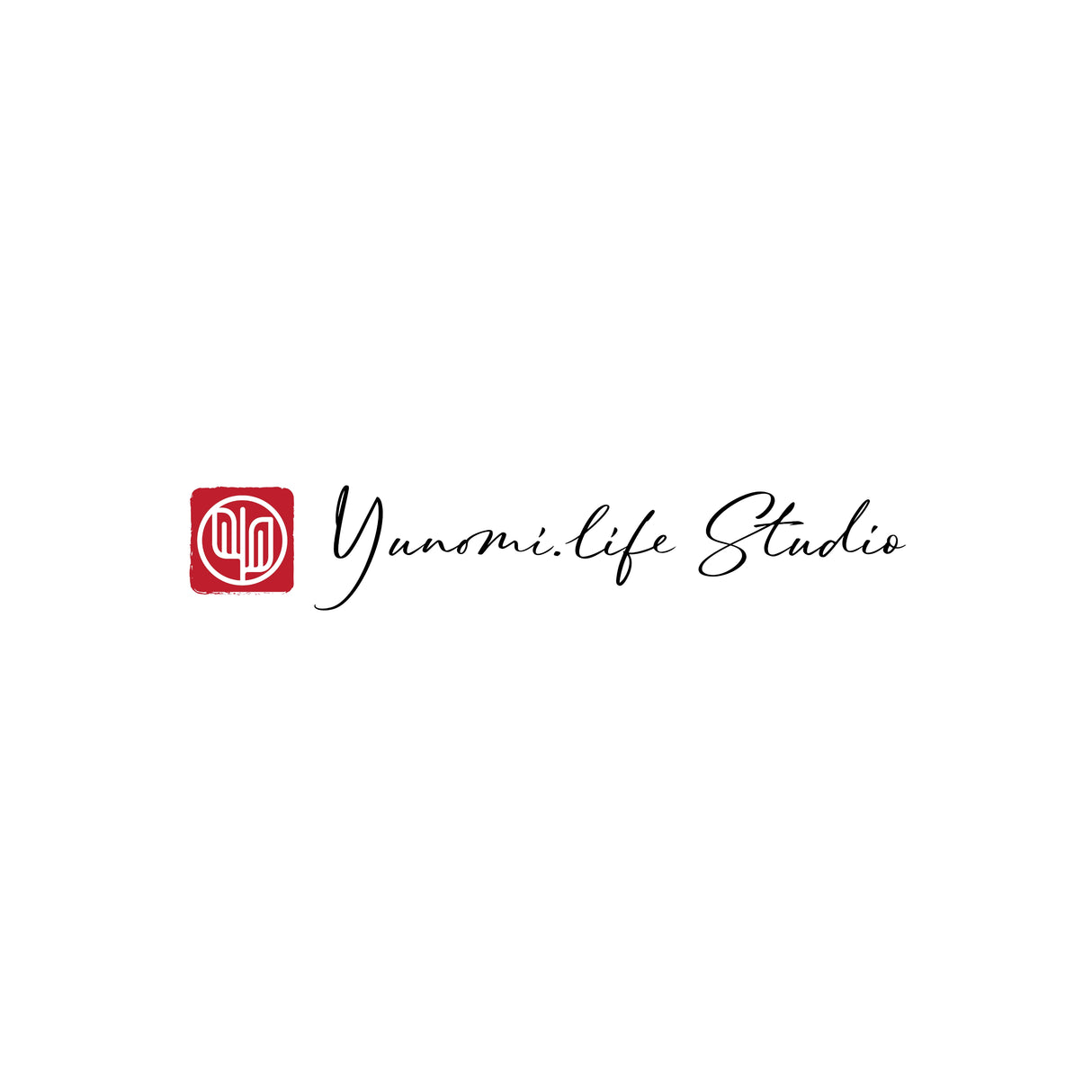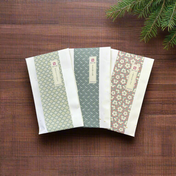Yunomi.Dojo Studio Lesson - 104 - Advanced Green Tea Tasting - Quality Spectrum Set
Yunomi.Dojo Studio Lesson - 104 - Advanced Green Tea Tasting - Quality Spectrum Set - In-person Studio Lesson with Tasting (Ignore Google Meet link) <-- Out of stock. PREORDER NOW. Specific products may have specific circumstances, but in general, procurement time is 2-3 weeks. Note matcha may take 1-3 months. Repacking is possible if a larger size is available (1-2 weeks).
Couldn't load pickup availability
If item is out of stock, add it to your wishlist to be notified by email as soon as item can be purchased.
Shipping Methods & Delivery Guarantee
Shipping Methods & Delivery Guarantee
Shipping fees vary by country, courier, and method. Place items into your inventory and go to the CART page to see the shipping estimate calculator. For some countries, we may need to manually calculate fees after purchase.
YUNOMI.LIFE'S DELIVERY GUARANTEE: We guarantee delivery for all orders shipped by airmail with a tracking number. (Conditions apply. Exceptions when notified.) Occasionally, orders may require additional customs processing for import. We will aid you to the fullest extent of our ability. If your order does not arrive within ONE month from shipment due to no fault of your own, we will replace or refund your order at no extra cost. We reserve the right to refuse shipment if we think delivery to your address may be difficult. This guarantee does not apply if recipient neglects or refuses to pay customs fees & import taxes, neglects to retrieve an order held at a post office or distribution center, or if the order is not deliverable due to a wrong address. Yunomi.life's Delivery Guarantee does not apply to wholesale purchases.
This tea set is meant for tea enthusiasts who are looking to solidify their tasting knowledge of Japanese green tea, specifically the different grades of teas, and the subtle gradation between them.
Different teas should be enjoyed in different ways, in particular, you might use low temperature steeping to extract gyokuro tea’s umami flavor. But for this tasting set we recommend using a standard steeping method to compare. Professional tasters will steep at 100C degrees, extracting all the teas components regardless of flavor, but we recommend a water temperature of 70C/160F degrees, 1 minute steep, 3 grams of tea, and 100 ml of water.
STEEPING PARAMETERS
3 grams of tea, 1 minute, 70C/160F degrees, 100 ml
The below are the items contained in this set. 10 grams of each are provided. The order is from most premium to least premium grade, all are unroasted green teas.
NOTE: Teas in the set may not match the product photograph. Set is picked on demand.
- Gyokuro (Most premium Japanese green tea leaf)
- Kabusecha
- Premium sencha
- Standard sencha
- Basic sencha
- Spring-harvested bancha
- Autumn-harvested bancha (Least premium Japanese green tea leaf)
Our recommendation is to taste 2-3 teas at each time, tasting teas that are very far apart (Kabusecha vs Bancha), and in a separate tasting, taste teas that are right next to each other on the list (Premium gyokuro vs Standard gyokuro).
Remember, any of these green teas can be steeped with any combination of parameters (tea amount, water amount, water temperature and time) when you are exploring how the steeping affects the flavor.
Types
All the teas contained in this set can be considered grades of sencha using the wide definition: tea leaf that has been steamed after harvested, rolled, and dried. The different types refer to differences in cultivation and quality, and so we use a narrower definition of sencha of tea leaf that has not been shaded, but has not been allowed to grow to a very large size.
GYOKURO - “jade dew tea” 玉露 - the most premium type of green tea, gyokuro is cultivated in a way that increases the umami flavor of the leaf by a large amount. This generally means that it is shaded for at least around 3 weeks before harvest, though the exact timing may depend on conditions each year. The intensity of flavor is also a result of a large amount of fertilizer used in cultivation to give the leaf an infusion of nutrients.
The heritage grade uses traditional techniques in shading (a canopy covered in straw which allows the farmer to adjust the amount of shading day by day depending on the sunlight) as well as handpicking. Because the leaf will be handpicked, the plant is allowed to grow freely, and the farmer will pluck the terminal bud to force buds to grow on base leaves below the tip of each branch (lateral buds).
Premium and Standard level gyokuro will use direct shading of tea plant hedges that have been shaped in a way to allow more efficient machine harvesting.
KABUSECHA - “shaded tea” かぶせ茶 - Once a filler tea leaf meant for blending (to increase the quantity of gyokuro, or improve the quality of sencha), kabusecha is also a shaded leaf. Generally, direct shading is used, and the period is shorter, often just 1-2 weeks though there is no specific definition. The shading increases the umami flavor of tea, but not as much as gyokuro since the shading period is shorter.
SENCHA - 煎茶 - The first flush of the year, spring, is when leaves have the most flavor. High grade sencha may be considered higher grade simply due to the skill of the farmer, but also due to how early the tea leaf is harvested (the earlier, the more delicate and sweet the leaf will be as exposure to sunlight / longer leaf growth creates a more bitter and stiff leaf).
Summer harvest, or the second flush generally in June - July, produces a leaf that doesn’t have as strong of a flavor as the spring harvest, and is often cultivated purposely by the farmer for higher volume (larger, lower quality leaf) since the second flush does not fetch a significant price on the market anyway.
While you can shade a tea plant and call the harvested leaf sencha, in general we consider unshaded leaf to be sencha to differentiate from shaded leaves.
BANCHA - 番茶 or 晩茶 - A type of tea leaf processed in the same way as the ones above but allowed to grow to a large size for higher volume. This also means that the leaf is too stiff to roll into needles, and end up shaped like willow leaves (in fact, in Western Japan, non-roasted bancha is called “yanagi bancha” = “willow bancha”). This leaf, as the lowest quality, is also often used for making roasted green tea, or hojicha. The two banchas in this set represent higher quality spring harvest (which is often late budding leaves from the first flush...harvested in late May or early June, but before the second flush of leaves), and the autumn harvest generally in late September - October.
Payment & Security
Payment methods
Your payment information is processed securely. We do not store credit card details nor have access to your credit card information.






